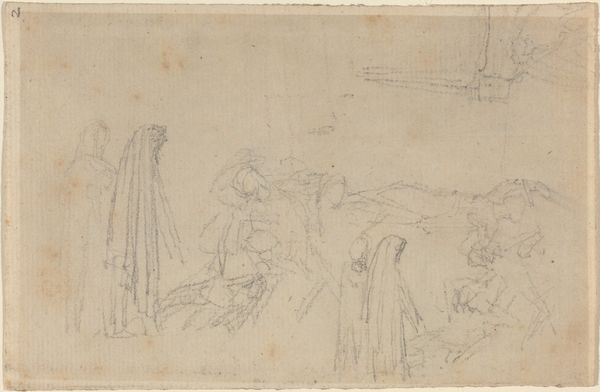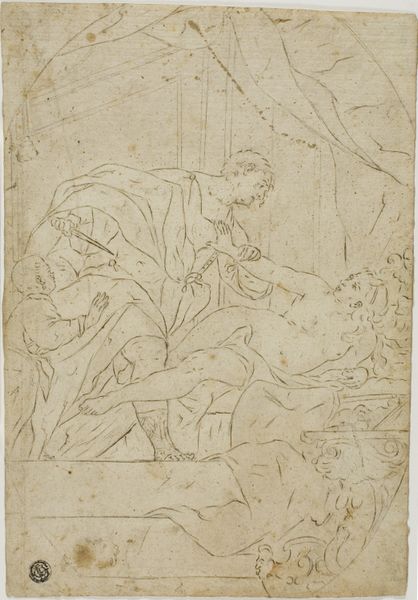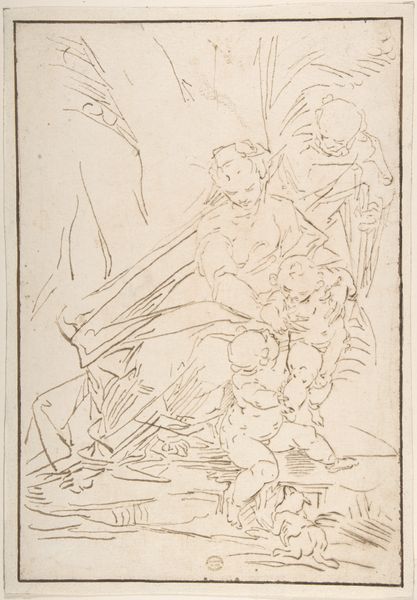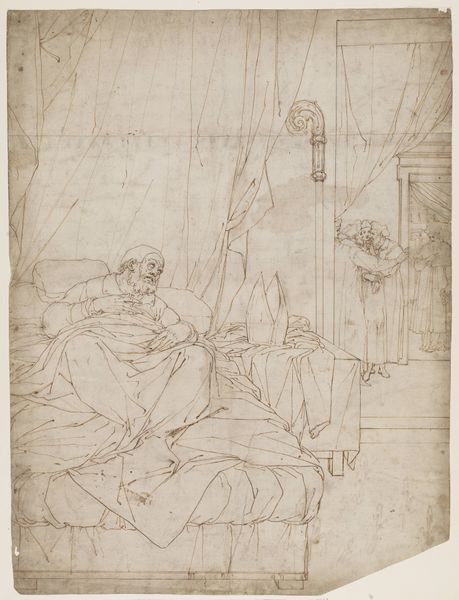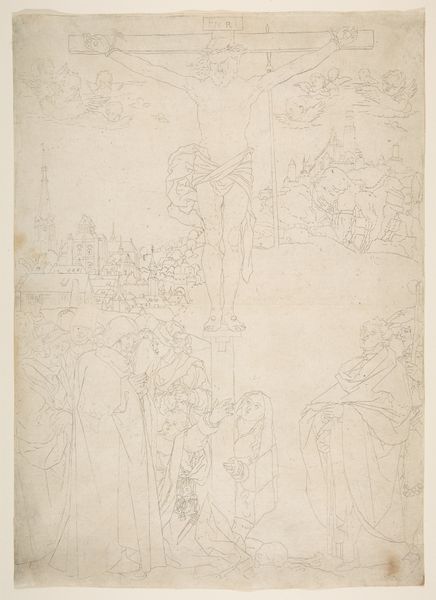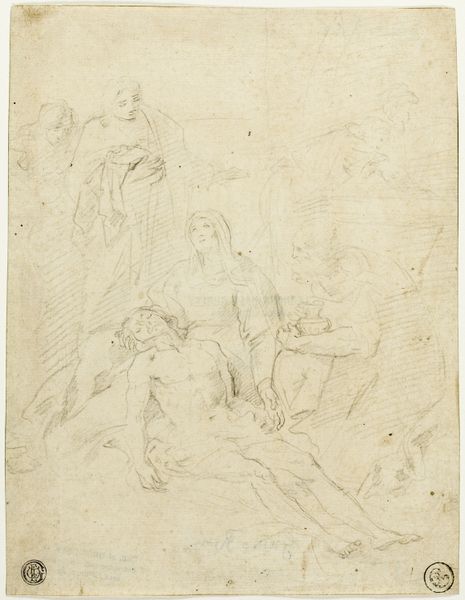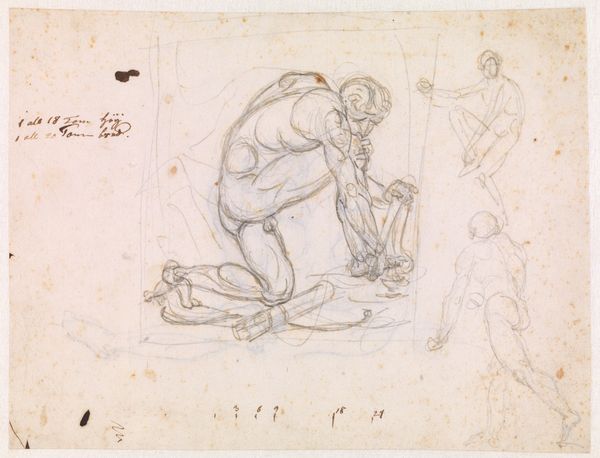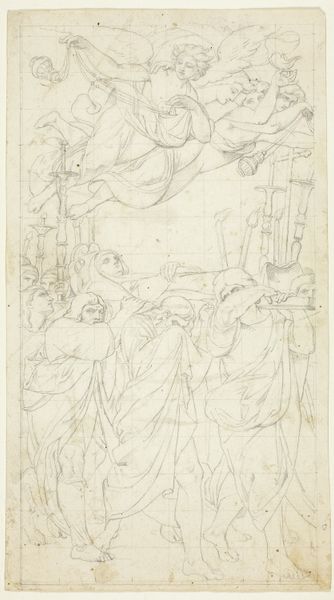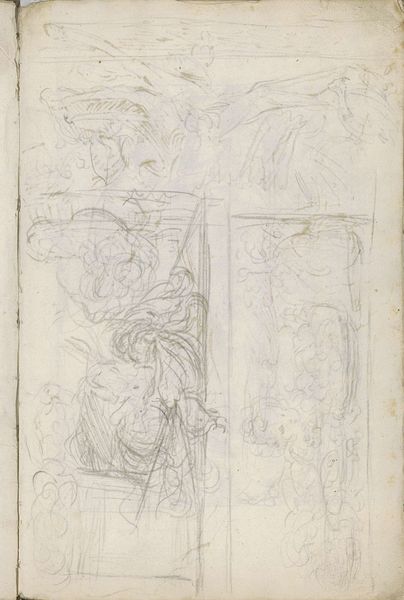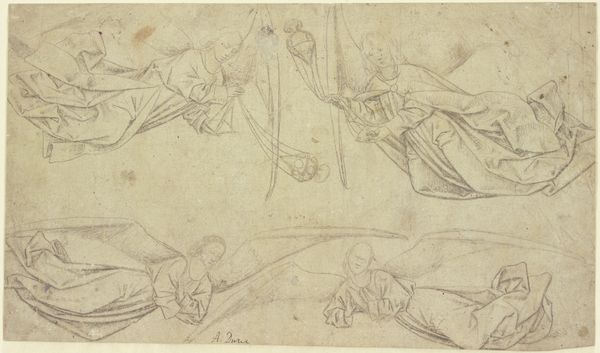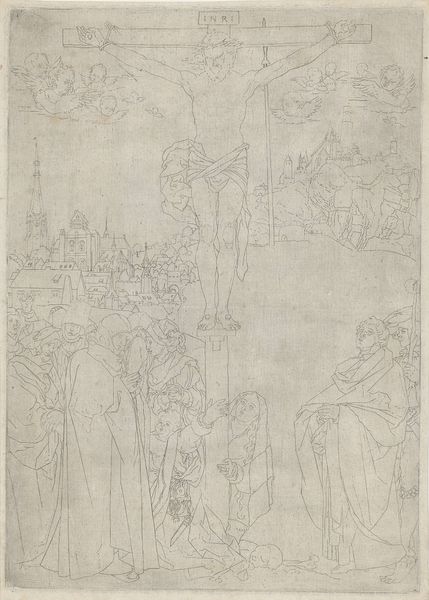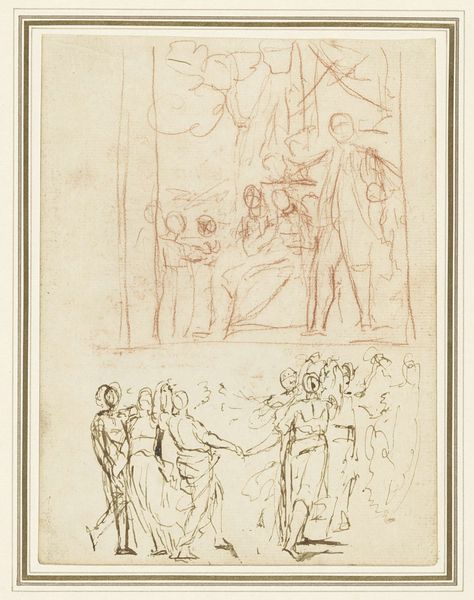
drawing, paper
#
portrait
#
drawing
#
figuration
#
paper
#
romanticism
#
line
#
history-painting
Copyright: Public Domain
Editor: We are looking at "Scene from Hamlet", a drawing by Eugène Delacroix. It's done on paper. It feels almost like a preliminary sketch. The lines are very delicate, giving it a sort of ethereal quality. What strikes you most about this composition? Curator: The structural dynamics are most compelling. Delacroix masterfully employs line to orchestrate movement and tension within a confined space. Note the contrast between the rigid architectural elements and the fluid rendering of the figures. Editor: The contrast is really something, with Ophelia laying prone juxtaposed to a very upright... queen? I think. Curator: Precisely. Examine the disposition of the figures. The reclining form of Ophelia establishes a horizontal axis, counterpointed by the verticality of the standing figure. The dramatic foreshortening of Ophelia's outstretched arm creates a strong directional line that pulls the viewer's eye across the picture plane, enhancing the sense of depth and spatial recession. Notice too, how light and shadow—even in their most rudimentary forms—create depth and form. Editor: The architecture does act almost as a frame for their actions. Was it common to see theatrical scenes depicted this way? Curator: Indeed. Within the Romanticist focus on emotional and dramatic content, Delacroix frequently uses theatrical themes, inviting consideration not just of narrative, but its effect on an audience. Editor: So, we should observe the interaction of shapes, lines, and form to unlock a richer understanding. Curator: Exactly. This intense focus reveals much about Delacroix's intent. The interplay between representation and raw, artistic elements conveys an inner emotional world effectively. Editor: Thanks! I will try to notice more structure in compositions from now on.
Comments
No comments
Be the first to comment and join the conversation on the ultimate creative platform.
